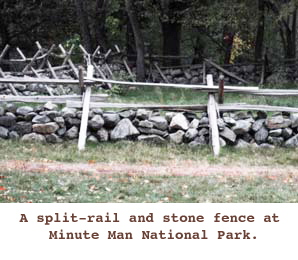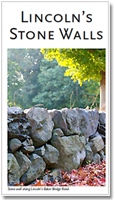Stone walls
Abandoned stone walls are the signatures of rural
New England.
In 1939, the mining engineer Oliver Bowles, using
data from an 1872 Department of Agriculture report
on fences, estimated that there were approximately
240,000 miles of stone walls in New England. That’s
longer than the U.S. coastline.
Most stone walls in Lincoln are drystone walls. Drystone
walls are laid up without mortar. Gravity keeps
everything in place. One advantage to dry walls is
that they can be taken apart and reassembled.
EARLY HISTORY
New England did not become stony until the Laurentide
Ice Sheet invaded the region from central Canada
fifteen to thirty thousand years ago.
There is the mistaken impression that stone walls are primarily a colonial phenomenon. They are not. Although walls were being built from the time of the first settlement to the end of the pioneering stage, most were built in the half century between the end of the American Revolution and the construction of the first railroads.
Settlers felled forests and cleared land of rocks and stone. The first walls were mere dumps along a field’s periphery. Later people built more sophisticated walls.
Stone was not their first choice of fencing material: Widespread use of it began only when other alternatives – stumps and split rails – grew scarce because of overclearing.
Thousands of fence lines became magnets for the stone refuse that would otherwise have ended up in piles. The large boulders were rolled into position; smaller stones were tossed above and between them. As the stone accumulated, primitive “tossed” walls began to rise up out of the weeds, replacing the lower tiers of wooden fences.


